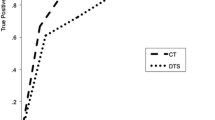Abstract
Purpose.
The purpose of this study was to evaluate efficacy of multislice computed tomography (MSCT) and single photon emission computed tomography (SPECT)–CT with Tc–99m Sestamibi in the assessment of solitary pulmonary nodules of uncertain significance. Scintigraphy was performed using a ‘hybrid’ g–camera that allows simultaneous acquisition of SPECT and CT images, with interesting results in diagnostic oncology.
Materials and methods.
Between September 2003 and August 2004, 23 patients with a solitary pulmonary nodule detected on CT underwent SPECT–CT using Tc–99m Sestamibi as a radiotracer. Nodules with positive scintigraphy were immediately subjected to biopsy or surgical resection. Nodules with negative scintigraphy were followed up after 3–4 months by MSCT with automatic segmentation software (Advanced Lung Analysis, ALA) and histological characterisation.
Results.
Of the 23 nodules (size range 0.8–2 cm) discovered with MSCT, 11 showed intense uptake of Tc–99m Sestamibi. Ten lesions were true positive: seven adenocarcinomas, one squamous cell carcinoma, one large cell carcinoma and one metastasis. The only false positive was histologically classified as a large cell granuloma. Twelve lesions had negative scintigraphy: five fibrous lesions, three hamartomas, three granulomas and one adenocarcinoma (false negative). Benign nodules without tracer uptake underwent another CT scan 3–4 months later, which confirmed stability of the nodule size. Correlation of Sestamibi SPECT with histology showed sensitivity (Se) of 90.9 %, specificity (Sp) of 91.6 %, diagnostic accuracy of 91.3 %, positive predictive value (PPV) of 90.9% and negative predictive value (NPV) of 91.6 %.
Conclusions.
The integrated use of MSCT and Tc–99m Sestamibi SPECT–CT could be very useful in the management of solitary pulmonary nodules (SPNs). In particular, in our preliminary study, scintigraphy provided significant diagnostic information to differentiate benign from suspicious pulmonary nodules. The use of scintigraphy could be helpful to anticipate histological assessment and surgical treatment of SPNs identified at CT.
Similar content being viewed by others
Author information
Authors and Affiliations
Corresponding author
Rights and permissions
About this article
Cite this article
Sergiacomi, G., Schillaci, O., Leporace, M. et al. Integrated multislice CT and Tc–99m Sestamibi SPECT–CT evaluation of solitary pulmonary nodules. Radiol med 111, 213–224 (2006). https://doi.org/10.1007/s11547-006-0022-7
Received:
Accepted:
Published:
Issue Date:
DOI: https://doi.org/10.1007/s11547-006-0022-7




